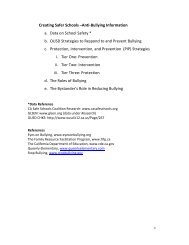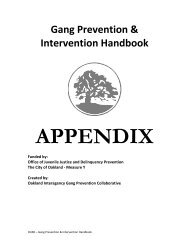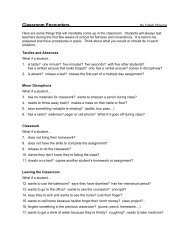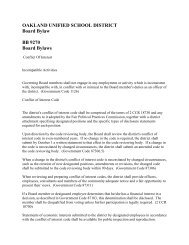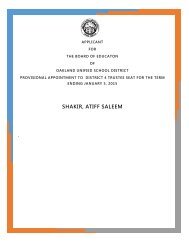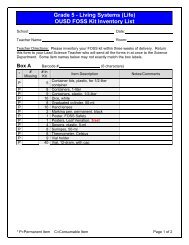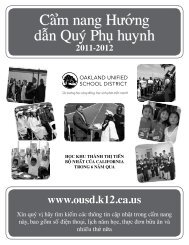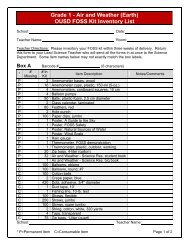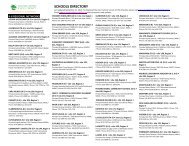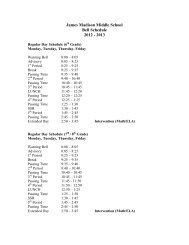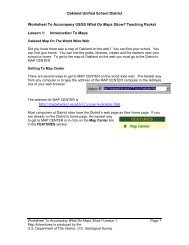Science Framework, part 1 - Free Downloads (CA Dept of Education)
Science Framework, part 1 - Free Downloads (CA Dept of Education)
Science Framework, part 1 - Free Downloads (CA Dept of Education)
- No tags were found...
You also want an ePaper? Increase the reach of your titles
YUMPU automatically turns print PDFs into web optimized ePapers that Google loves.
4Chapter 1Introduction tothe <strong>Framework</strong>the classroom. But are the same studentswell served if seed planting is afocus <strong>of</strong> the science curriculum in thenext year and the following one aswell? The same question may well beasked <strong>of</strong> any instructional activity. Toovercome the challenges in scienceeducation, several strategies are recommended:Prepare Long-Term PlansLong-term planning <strong>of</strong> a sciencecurriculum over a span <strong>of</strong> grades helpsstudents learn new things and developnew skills each year. A standardsbasedcurriculum helps students whomove from district to district; theywill be more likely to receive a systematicand complete education.The <strong>Science</strong> Content Standards andthe <strong>Science</strong> <strong>Framework</strong> are designed toensure that all students have a richexperience in science at every gradelevel and that curriculum decisions arenot made haphazardly. Instructionalprograms need the content standardsto be incorporated at each grade leveland should be comprehensive andcoherent over a span <strong>of</strong> grade levels.Reforming science curriculum,instruction, and instructional materialswill be a time-consuming process.To achieve the reform objectives, alleducational stakeholders need to adhereto the guidance provided in thisframework. The hope is that in thenear future teachers will have a muchgreater degree <strong>of</strong> certainty about theknowledge and skills the studentsalready possess as they file into theclassroom at the beginning <strong>of</strong> a schoolyear. Less time will be spent on review,and teachers will also have aclear idea <strong>of</strong> the content their studentsare expected to master at each gradelevel and in each branch <strong>of</strong> science.Meet the CurricularDemands <strong>of</strong> Other CoreContent AreasThe Reading/Language Arts <strong>Framework</strong>and Mathematics <strong>Framework</strong> 4explicitly require uninterrupted instructionaltime in those subjects. In theearly elementary grades, students needto receive at least 150 minutes <strong>of</strong> reading/languagearts instruction daily and50 to 60 minutes <strong>of</strong> mathematics instruction.At the elementary schoollevel, the pressure to raise the academicperformance <strong>of</strong> students in reading/language arts and mathematics has ledsome administrators to eliminate orcurtail science instruction. This action isnot necessary and reflects, in fact, a failureto serve the students. The <strong>Science</strong><strong>Framework</strong> helps to organize and focuselementary science instruction, bringingit to a level <strong>of</strong> efficiency so that it neednot be eliminated.All teachers, <strong>part</strong>icularly those whoteach multiple subjects, need to usetheir instructional time judiciously. One<strong>of</strong> the key objectives set forth in theMathematics <strong>Framework</strong> applies equallywell to the study <strong>of</strong> science: “During thegreat majority <strong>of</strong> allocated time, studentsare active <strong>part</strong>icipants in the instruction.”5 In this case active meansthat students are engaged in thinkingabout science. If the pace <strong>of</strong> an activityis too fast or too slow, students will notbe “on task” for much <strong>of</strong> the allottedtime.When large blocks <strong>of</strong> time for scienceinstruction are not feasible, teachersmust make use <strong>of</strong> smaller blocks. Forexample, an elementary teacher and the



